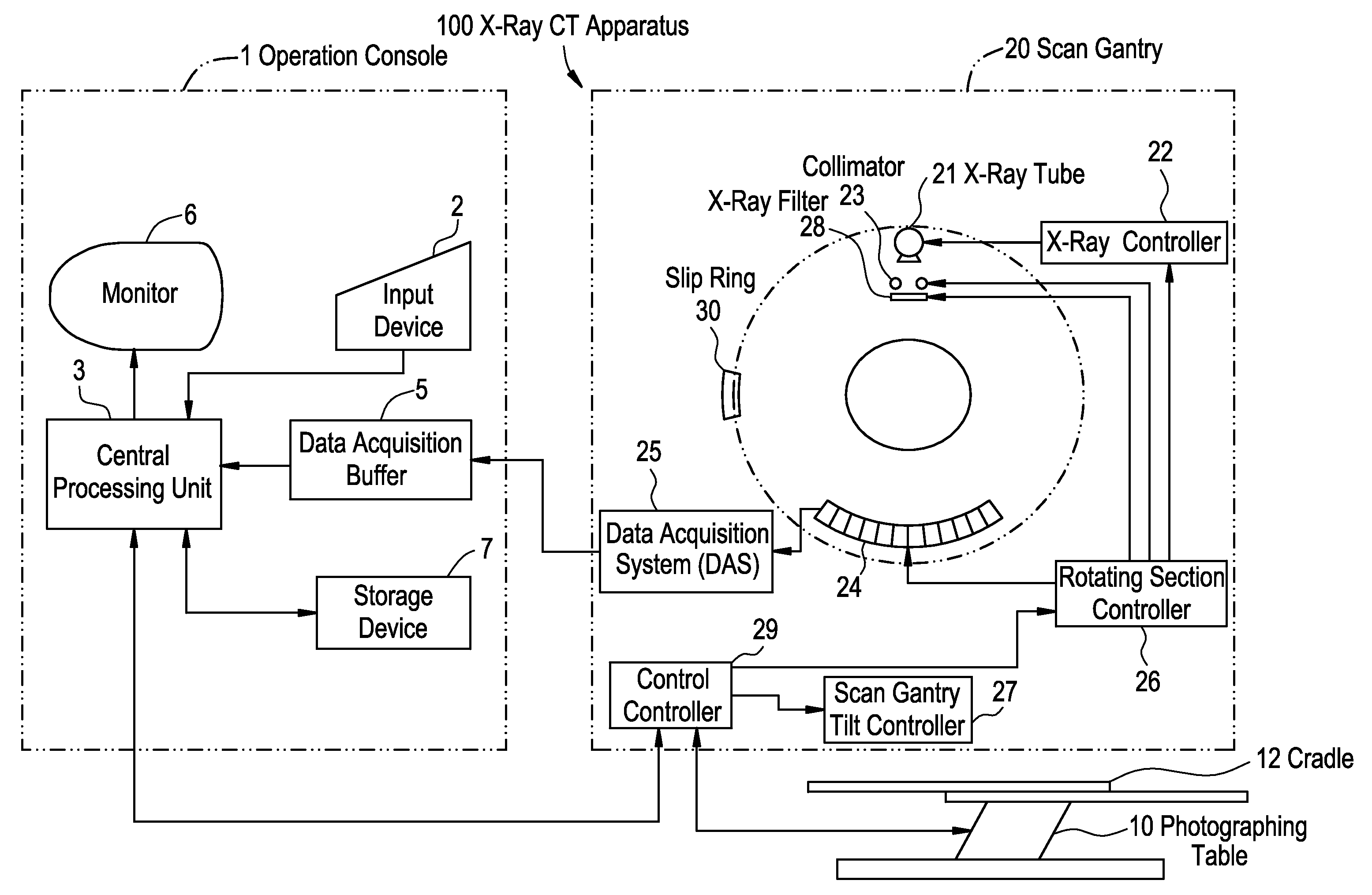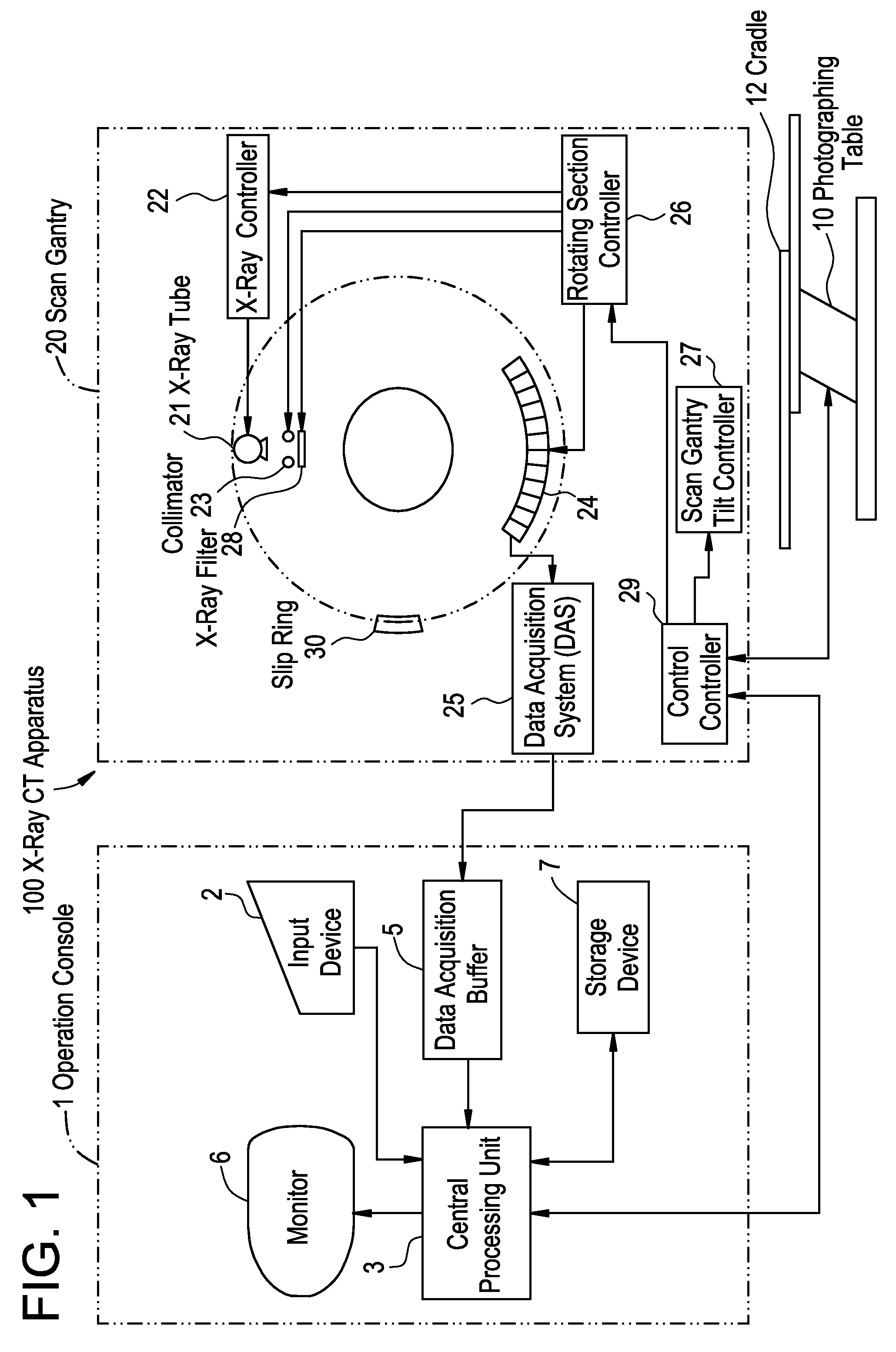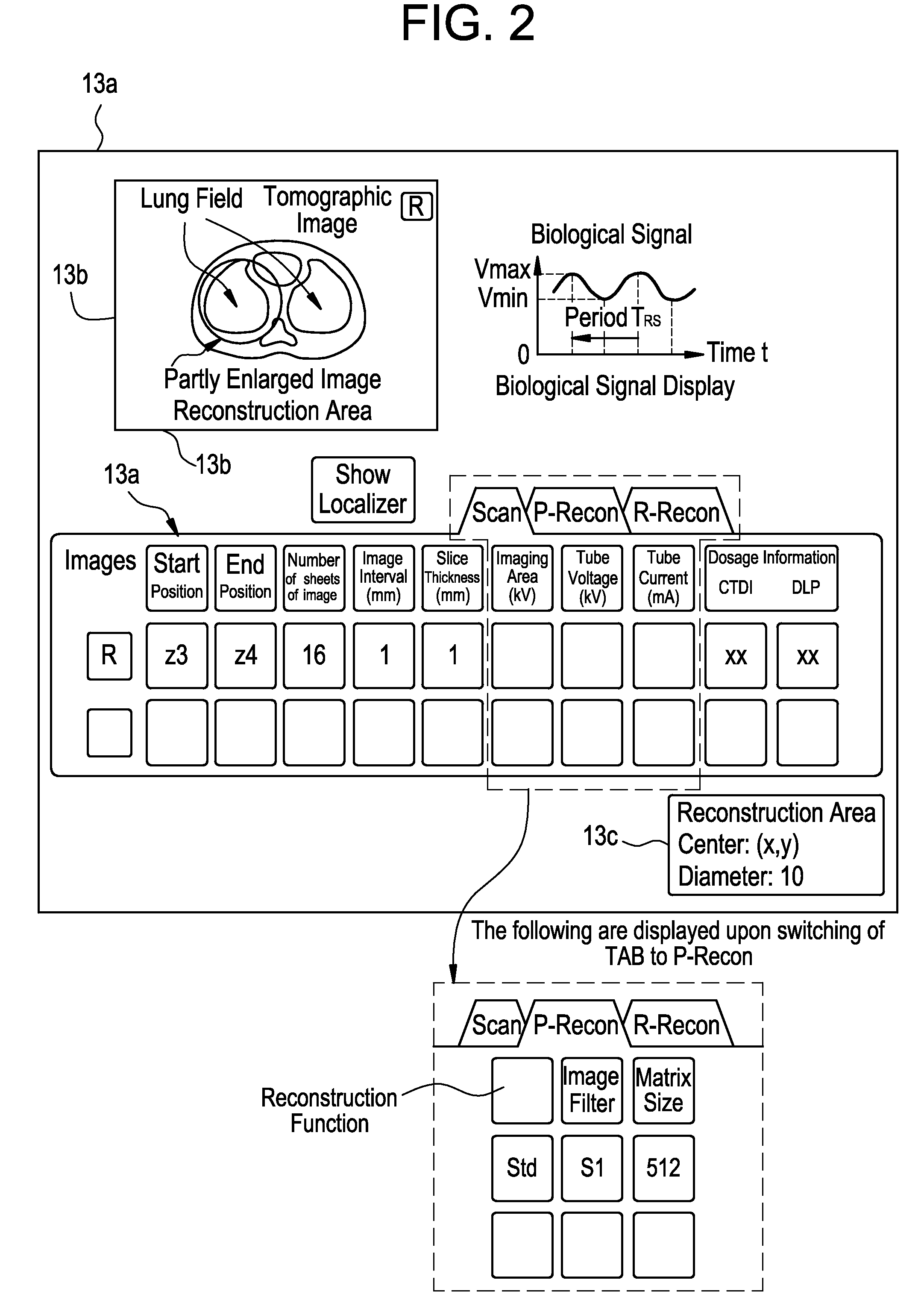X-ray ct apparatus and x-ray ct scanning method
- Summary
- Abstract
- Description
- Claims
- Application Information
AI Technical Summary
Benefits of technology
Problems solved by technology
Method used
Image
Examples
first embodiment
[0161]It should however be noted that since the contrast agent becomes a significant burden on the subject, the amount of the contrast agent is reduced as much as possible to perform the photography. Therefore, there is a demand to inject the contrast agent into the subject with suitable timing and perform X-ray CT imaging at the timing with a suitable delay time.
[0162]The following are known as a method for recognizing this contrast-agent injection and the suitable timing
[0163]1. Bolus Tracking Method
[0164]It is a method of monitoring a change in CT value at a region of interest ROI after the injection of a contrast agent and starting an actual scan with the most suitable timing when exceeds an established threshold value.
[0165]2. Test Injection Method
[0166]Prior to an actual scan, this test is that a pre-scan using a small amount of contrast agent is performed to grasp the rate of the bloodstream. Based on this result, this actual scan determine the optimum timing and proceed phot...
second embodiment
[0482]At the actual scan preparatory operation 3 shown in FIG. 34 of the first embodiment and the actual scan preparatory operation 4 shown in FIG. 35, the retention or holding period in which the X-ray tube 21 and the multi-row X-ray detector 24, and the cradle 12 are being relatively stopped in the z-axis direction, exists in the times [t3, t4] and times [t6, t7].
[0483]When such three-dimensional image reconstruction as shown in FIG. 7 is used in particular, such retention as described above exists when z=z0 and Z=Z7 at the times [t34, t4] and times [t6, t7] shown in FIG. 34 or 35. If the retention period in which the X-ray tube 21 and multi-row X-ray detector 24, and the cradle 12 are being relatively stopped, is for example, fan angles +180° or more, or fan angles +180° or so, then the tomogram image reconstruction range can be extended outside up to about half the X-ray beam width at maximum as compared with the moving range of each of the X-ray tube 21 and multi-row X-ray dete...
third embodiment
[0484]In the first embodiment, needless exposure has been reduced by avoiding the application of X rays to the non image-reconstructed portions by the X-ray collimator 23.
[0485]In the second embodiment, the tomogram image reconstructable range is extended to the X-ray radiation range by the three-dimensional image reconstruction using the application of X rays during the retention period in which the X-ray tube 21 and the multi-row X-ray detector 25 and the cradle 12 are being relatively stopped in the z-axis direction, thereby reducing needless exposure.
[0486]FIG. 44A is a diagram showing an X-ray radiation range for a conventional helical scan, and FIG. 44B is a diagram showing an X-ray radiation range for a helical scan in which a scan gantry 20 of the third embodiment is tilted. At the conventional helical scan, the portions corresponding to diagonally-shaped portions shown at the scan start and end in FIG. 44A have been used as for X-ray radiation unused in image reconstruction...
PUM
 Login to View More
Login to View More Abstract
Description
Claims
Application Information
 Login to View More
Login to View More - R&D
- Intellectual Property
- Life Sciences
- Materials
- Tech Scout
- Unparalleled Data Quality
- Higher Quality Content
- 60% Fewer Hallucinations
Browse by: Latest US Patents, China's latest patents, Technical Efficacy Thesaurus, Application Domain, Technology Topic, Popular Technical Reports.
© 2025 PatSnap. All rights reserved.Legal|Privacy policy|Modern Slavery Act Transparency Statement|Sitemap|About US| Contact US: help@patsnap.com



